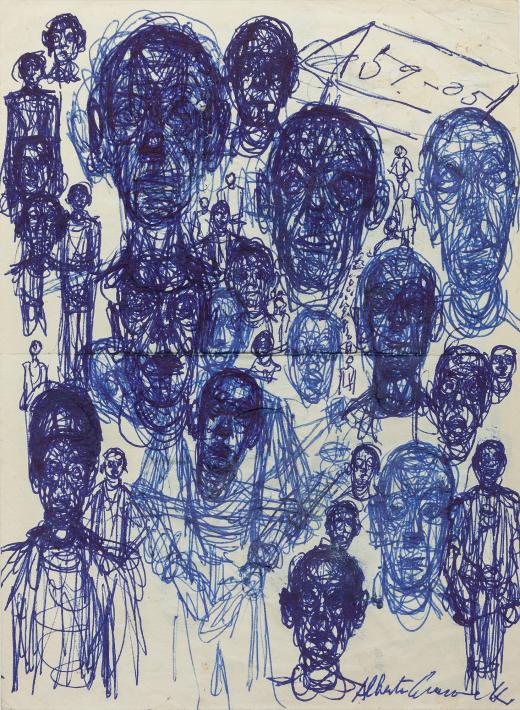MINUSCULE SCULPTURES AND DRAWINGS
GALLERY 202
Between 1938 and 1944, the scale of Giacometti’s sculptures shrank, and the distance from the viewer increased. Giacometti moved during the war to Switzerland, where he spent a great deal of time with his nephew Silvio, teaching him history while sculpting him again and again in the hotel room he had turned into a studio. There he created sculptures like Small Bust on a Double Base (1940–41), and figures taken from life like Silvio Standing, Hands in Pockets (1943). Years later, Silvio recalled the process he observed while he posed for his uncle, sometimes for fifteen minutes and sometimes for an hour at a time. The artist would make a figure one day and return to it the next, working it down to half its original size until it was just eight or ten centimeters tall.
We thus have a first-hand account of how Giacometti discarded or reduced his works to synthesize them in smaller forms. The artist explained: “Working from life, I ended up creating tiny three-centimeter sculptures. I did it despite myself. I couldn’t understand it. I started big and ended minuscule. Only the minuscule struck me as a resemblance [to the model]. I understood it later: a person is not seen as a whole until one draws away and the person grows tiny.”
On display in this gallery are various studies of heads drawn in ink on paper in the early 1960s. These drawings allow us to appreciate Giacometti’s practice in his obsessive reworking of the face, trying incessantly to capture the gaze, the spark of life in the eyes of each individual. For him, the gaze, and the way it can penetrate the viewer’s space, is crucial.
After experimenting with Surrealist or abstract drawing techniques, the artist returned to the more traditional medium of painting from life, which he continued to practice until his death. The sketches he compulsively produced each day are an exercise in the quest for truth in representation.

